The Hidden Treasures of Belize by Living Abroad Contributing Editor Volker Poelzl
|
|
|
|
The small Central American country of Belize is primarily known for the world's second largest barrier reef and its picturesque islands, which are a popular destination for sun seekers and divers. But Belize has much more to offer than coral reefs and pristine beaches. The country has a great cultural and ecological diversity, and visitors are well advised to venture beyond the islands and beaches to explore the country's rich traditions and natural heritage. For travelers interested in meeting the diverse ethnic groups that make up the country's population while exploring remote natural attractions, the southern district of Toledo is the best destination. Although southern Belize is the least visited region of Belize, it is home to ancient Mayan temples, pristine rain forests, dense mangroves, mountain ranges, extensive river systems, limestone caves, and lagoons. Small indigenous communities are scattered all across this largely unspoiled region, where the villagers pursue traditional livelihoods of farming and fishing...
Read more...
|
Latin America Travel Planner 2008 by Latin America and Ecotourism Editor Ron Mader
|
|
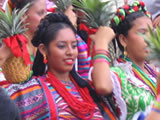
|
Latin America has never been so easy to visit.
Latin America is enjoying renewed interest due to its cultural and environmental diversity. Environmentalists talk of biodiversity — the species-rich forests of Mexico and Brazil, the abundant birdlife in Costa Rica and Honduras, and the megadiversity found in Brazil, Colombia, Ecuador, and Venezuela.
Whether your idea of a good time is hiking the Andes, buying crafts in Oaxaca, snorkeling along the Maya Reef, volunteering in rural communities, or learning how to cook a tasty tamale, travel options abound and most are a bargain if you know where to look...
Read more...
|
The "Semana Santa" Easter Festival in Antigua, Guatemala by Sandra Kennedy
|
|

|
Pastel-colored homes, cobblestone streets, bougainvillea-covered walls and looming volcanoes offer the first glimpses of Antigua. The UNESCO World Heritage site embraces thousands of travelers wanting to experience this world-famed Catholic celebration commemorating the Passion, Crucifixion, and Resurrection of Jesus Christ.
Antigua, Guatemala comes alive with its annual "Semana Santa" Holy Week, held sometime between March 22 and April 23. The entire city participates in the solemn activities during the week with a joyous celebration on Easter. Spanish missionaries from Seville initiated this religious occasion during colonial times...
Read more...
|
Responsible Travel and Ecotourism in Mexico and Central America by Ron Mader
|
|
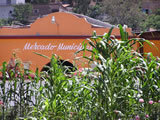
|
Latin America is the cradle of ecotourism. First touted as a development strategy to preserve the wilderness and development employment in Celestun, Mexico by Hector Ceballos-Lascurain in 1983, ecotourism was adopted by many countries including Costa Rica and Ecuador as a viable way to promote rural tourism and environmental awareness.
Costa Rica quickly became the poster child for green travel and ecotourism thanks to a plethora of scientific research and the success of the New Key guidebook...
Read more...
|
Volunteering, Educational, and Responsible Travel in Belize by Joshua Berman
|
|
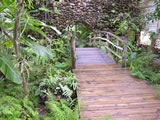
|
There are many good reasons why non-governmental organizations (NGOs), universities, and other groups play host to so many alternative tourism options in Belize. It is a small country (about the size of Massachusetts) whose tiny and diverse population of less than 300,000 speak English; it is close (about a two-hour flight from either Miami or Houston); it is safe; and it is beautiful. And the growing number of visitors who come to Belize with time and energy to teach, study, learn, and work are not disappointed. Call it "engaged," "alternative," or "sustainable" tourism and get ready to get involved...
Read more...
|
Working at an Eco-Lodge and Guiding Tours in Costa Rica by Caroline Nye
|
|
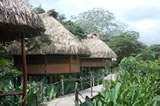
|
"Caroliiiiiiiiiiiiiiiiiiina." I heard someone shouting my name across the river. I wiped my soil-covered hands on my overalls and wandered over to the river to peer through the trees at whoever was shouting to me. It was one of the local lads who worked at the lodge up the road. He tethered his horse to a tree and wobbled over the plank we used as a bridge, waving a small piece of paper in his hand
...
“COME QUICKLY PLEASE. TONIO HAS LEFT, WE HAVE AN UNEXPECTED ARRIVAL OF AMERICAN TOURISTS AND YOU ARE THE ONLY PERSON IN THE VILLAGE WHO SPEAKS ENGLISH AND SPANISH NOW. CAN YOU HELP?”...
Read more...
|
Getting Around in Mexico by Resourceful Travel Columnist Tim Leffel
|
|
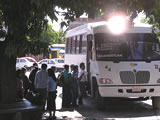
|
If you've been traveling around Southeast Asia or Central America, the distances required to go from place to place in Mexico can come as a shock. Moving from one coast of Mexico to the other is similar in scope to doing the same thing in Canada or the U.S.-this is the 15th-largest country in the world by area.
On the plus side, it can be quite comfortable going from city to city. Mexico has one of the best bus systems in the world, with four classes of service between popular destinations and roads that are, for the most part, in good shape...
Read more...
|
Overland Travel in Central America by Volker Poelzl
|
|
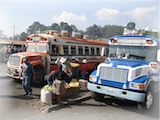
|
Central America is a fairly small region of seven countries with a total area comparable to the size of France or about twice the size of the state of Colorado. Despite its small size overland travel in Central America is much more time-consuming than a map would suggest. The region is dissected by highways, among them the Pan-American Highway, but most roads are just two-lane, often badly in need of repair. Most Central American countries have just one major highway connecting its major cities, which means that they are often overcrowded with trucks, buses, farm vehicles, and passenger vans...
Read more...
|
Travel Safety in Central America by Volker Poelzl
|
|
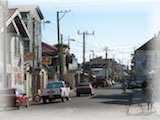
|
To prepare for my three-month Central America trip I did my homework and read travel warnings and country background information. Since I was traveling on my own and carried a laptop, two digital cameras, and all kinds of other gear, I wanted to be prepared for potential safety concerns. Unfortunately, the information I found was not encouraging for a long-term solo traveler. Most of the countries in Central America have a high crime rate and the reports included incidents of highway robberies by criminal gangs and muggings of tourists. Faced with these facts, I realized that I couldn’t possibly prepare for all potential safety. But I knew from my previous experiences in over thirty countries that travel warnings often exaggerate the reality on the ground and that I had to make my own assessment of safety in Central America. I decided that I would be as careful as possible but that I would not let such concerns spoil my trip...
Read more...
|
Spanish Language Learning in Honduras by Volker Poelzl
|
|

|
With growing economic ties and the movement of goods and human resources between North America and Latin America, Spanish continues be an increasingly important language for trade, business, and education. During this time of a weak dollar, Central America has become especially attractive for studying Spanish. It is not only cheaper than Mexico or Spain, but the region's six Spanish-speaking countries also have great cultural diversity and natural beauty. Guatemala and Costa Rica are no doubt the region's most popular destinations, but Honduras is beginning to emerge as a place where there is a good selection of Spanish schools located in some attractive areas...
Read more...
|
Studying Spanish in Mexican Language Schools After Graduation by Michael Kay
|
|
|
|
...My options have now been widened to include the large number of competent, but non-university language schools. Most of these schools are cheaper, the paperwork always minimal, and the instruction schedules are generally much more flexible. Such independence also allowed me to choose where I wanted to study, rather than being limited to a predetermined list. Thus I have been able to see many different aspects of Mexico. I started my travels in the preserved colonial city of San Miguel de Allende, located in the largely conservative central highlands, before moving on to the city of Oaxaca, one of the main nodes of the country's more liberal and racially heterogeneous south. I expect my next stop, San Cristabal de Las Casas, the capital of Chiapas...
Read more...
|
The Expat Phenomenon in Mexico by Rachel Hartman
|
|

|
Mexico: the land of purple flowers, loud mariachi bands, and fresh tortillas. Over the years, it has drawn more than a million Americans to settle among its people. What brings these expats south of the border and what makes them stay? Is it just cheap living, a sense of adventure, a curiosity of other cultures, or a little of all of the above? The answer, like most things in life, is complex. While their reasons vary, the vast majority of expats living in Mexico will agree on this: they love it, and don't want to leave...
Read more...
|
Volunteering in Mexico to Save Coral Reefs by Cheryl S. McDonald
|
|
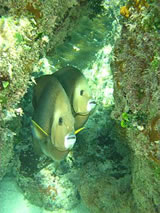
|
While finishing my transect for the morning’s fish monitoring session, I glanced up to find myself face to face with two beautiful gray angelfish. Quickly, I gathered my data slate — with notes about my morning's transect activities along with the measuring tape and monitoring stick — and put it back into the dive bag. I weighed down the gear bag with an extra two pound weight. Now I could play with the fish for the final eight minutes of allotted bottom time. After quick agreement with a buddy that it was time to check out the undersea life from the perspective of tourists and not scientists — we were off. As I slowly approached the beautiful fish they did not seem bothered, but rather curious. We seemed equally intrigued with each other...
Read more...
|
Volunteering in Honduras by Sasha Arms
|
|
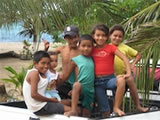
|
Honduras is a destination that was previously overlooked by visitors to Central America. The popular destinations of Costa Rica, Belize, and Guatemala left Honduras as a gateway country for travelers in transit. In recent years that has changed. Honduras is proving itself as a beautiful country with something to suit every travel taste, with sites of historical significance, traditional tribes, "paradise" islands offering diving and coral reefs, rustic islands providing a snapshot of communities untouched by tourism, modernizing cities, and Caribbean subcultures. Of course, as in every Latin American country, Honduras has its problems. More than half of the population lives below the poverty line, and as a result there is crime, poor education systems, and health problems. This is the terrible truth, but is also the reason why a travel experience to Honduras can be so much more rewarding. Volunteers are desperately needed across the country — for teaching, community work, medical work, and conservation...
Read more...
|
Endpage: A Journey in Guatemala by Luke Rodehorst
|
|
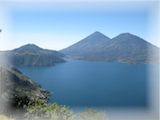
|
From the sky, Guatemala opens suddenly. Inactive volcanoes and the Sierra Cuchumatanes surround Izaball, a glassy lake surrounded by quaint fishing villages and dotted by an occasional sailboat. Guatemala City at this point is mostly obscured. Paradise remains intact.
98% of Guatemala City's 3 million person population lives in poverty. It is the largest city in Central America. Since there are no zoning laws, the city sprawls into a seemingly endless network of shantytowns. When people do have money, they often spend it on building a larger home...
Read more...
|
|
Calendar of Arts and Events
|
|
|
There are three wonderful visitor-friendly
festivals in Mexico this summer.
|

|
July
Oaxaca, Mexico — Guelaguetza.
|

|
August
Huamantla, Tlaxcala. Each year on August 14th residents of the town of Huamantla, Tlaxcala use
the streets leading to the main church to display carpets made of sawdust
and cut flowers.
|

|
September
September 16 — Independence Day. Mexico celebrates its independence from Spain with the famous "grito."' The
big party takes place in Mexico City's zocalo. Not for casual visitors as it becomes very crowded,. but there are festivals around the country that celebrate the
holiday.
|
|
|
|
|
|
Mexico and the countries of Central America attract plenty of budget travelers, and for good reasons. The coastal resort areas of Mexico cater to tourists on a short vacation-and are priced to match-but the rest of the vast country offers plenty of value and a good infrastructure. Costa Rica and Belize have gotten expensive for the same reason as parts of Mexico, but there are plenty of other options for those on a budget. In their own ways, Nicaragua, Honduras, El Salvador, and Guatemala offer some of the world's best bargains...
Read more...
|
|
Safety Tips for Solo Women Travelers
Women's Travel Columnist Beth Whitman
|
|
|
|
...people may have convinced you that traveling on your own is unsafe, therefore you’ve put off your life’s dream waiting for the right travel partner. The truth is that a woman journeying on her own does need to take a few extra precautions, but adhering to the following advice can result in rewarding and trouble-free travel...
Read more...
|
|
Five Ideas for Budget Sightseeing in Europe
Europe Budget Travel Columnist Kelby Hartson Carr
|
|
|
|
Sightseeing is often a Europe travel expense people forget or underestimate, but you can quickly rack up charges in the realm of even hundreds of euros in no time with tours and pricy attraction tickets. You don't want to miss out on the sightseeing, of course. That's a major reason you're visiting Europe. Just sightsee smartly, and you can protect your wallet from a major hit in these times of a high euro exhange rate...
Read more...
|
|
Ask the Expert Q&A
Taking Electronic Devices Overseas
Living Abroad Contributing Editor Volker Poelzl
|
|
|
|
From time to time readers send me questions about the electronic devices they plan to take overseas. In this column I summarize the most important issues travelers and expatriates should be aware of when taking their cell phone, PDA, laptop computer, or other electronic devices overseas...
Read more...
|
|
|
|
We are proud to launch TAzine as a monthly Webzine which continues the 31-year tradition started by Transitions Abroad magazine. TAzine features many of the same columnists who wrote for the magazine, a growing group of new columnists, while featuring many freelance writers who wish to share their experiences and expertise within the context of our innovative alternative coverage of work, study, travel, and living abroad.
Founded in 1977 by Dr. Clayton Allen Hubbs, Transitions Abroad magazine was the only print publication dedicated to work, study, living, volunteering, and immersion travel abroad. Its purpose — in print and now as a Webzine — is the dissemination of practical information leading to a greater understanding of other cultures through direct participation in the daily life of the host community.
Send in your submissions for the webzine on the subjects of travel, work, study, internships, teaching, volunteering, living abroad, and much more in accordance with our detailed writer's guidelines!
|
Current Issue and Focus
Central America and Mexico
|
Previous Issue and Focus
Europe and Budget Travel
|
|
|
|
|
To view all TAzine back issues, see our archive.
|
|
|
|
